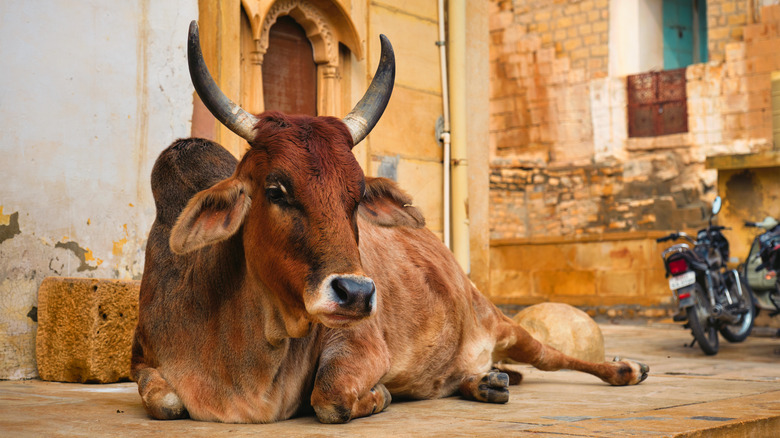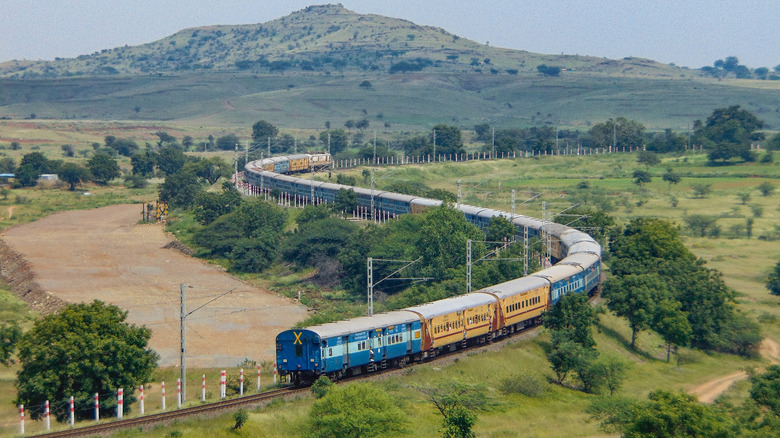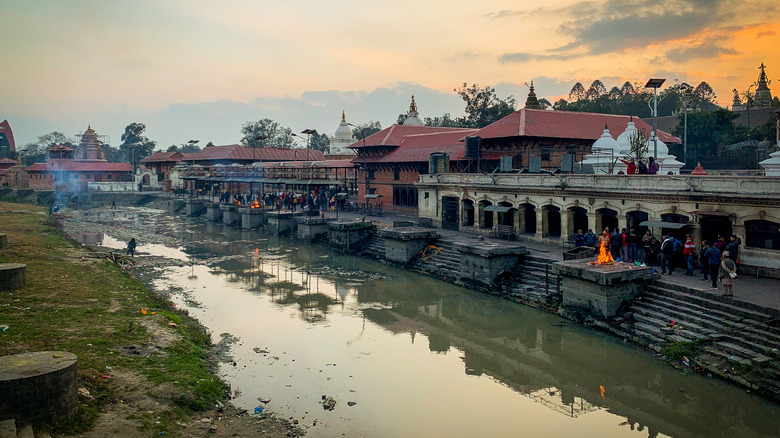The Deadly Train Wreck That Killed Hundreds Of People (Possibly To Avoid Hitting A Cow)
It's a thought experiment that's bound to have crossed the minds of many at some point: You're driving a car, the brakes cut out, and you've got no choice but to swerve and hit either a person or a dog. What do you do? Dogs are certainly figures of absolute sympathy, to the point where media like the "John Wick" film series frames mass murder as an acceptable retribution for a single killed dog. But how about other animals? Maybe an iguana? A kangaroo? A cockatoo? How about a cow? If you're in India that question takes on a whole other dimension because of the cow's revered place in Hindu belief. And that might be what happened in 1981 in the Indian state of Bihar when a train engineer braked to avoid hitting a cow. As a result, nearly 600 people died.
But just to be clear: The engineer of the train didn't exactly have a lot of time to ponder hypotheticals when he saw something cross the tracks in front of him in 1981. He might not have even realized it was a cow and just reacted instinctively to avoid hitting something. In fact, we don't even know with 100% certainty that the Bihar train disaster — as it's sometimes called — happened how we outlined above. Some sources like History frame the cow element as dubious, and sources like India Today frame it as small in comparison to the overall sense of loss. Ultimately, the Bihar train disaster was a tragic event no matter how it happened.
A catastrophic tragedy caused by monsoon rains
Plenty of people around the world might balk at the apparent cause of the Bihar train disaster and blurt, "Why didn't you just run the cow over?" So here's the thing: Cows are not exactly small animals — each weighs 1,200 to 1,500 pounds on average according to Ranchr. Under the best weather conditions hitting a cow could still derail a train, like what happened in Kent, England in 2015. That train, however, fared much better than the 1981 train in Bihar, India. There were no injuries whatsoever.
The disaster in question happened under the worst possible weather conditions in the middle of monsoon season — those who've experienced that kind of weather know exactly how ridiculously torrential monsoon rains can get. Flooding is rampant at this time of year, and at the time of the 1981 crash, water levels in the Bagmati River near the track were already way higher than normal. In fact, the Bihar train disaster was only one of 526 India derailments in the first nine months of 1981 alone.
In other words, the driver had no choice but to brake regardless of whatever animal was crossing the track. The tracks were incredibly slick, seven of out the train's nine bogies (wheel frameworks) lost contact with the rails, and train 416 Down nosedived right into the Bagmati River. While it's estimated that over 500 people — nearly 600 — died, including four giant wedding parties, only 286 bodies were recovered. It was the most catastrophic train disaster in history at that point.
Political blame and continued disasters
As India Today originally recounted back in 1981, there was public outcry over the Bihar train disaster. Government officials were pointing fingers here and there even as "varying theories" about the incident circulated around. Railway Minister Kedar Nath Pande threw up his hands and called the event a "God-sent tragedy." A "sudden cyclonic storm" was the culprit, and the cow story only came from the mouths of certain survivors. Some have even blamed the train's passengers, suggesting that the train was imbalanced at the time of the accident because the passengers had pulled all the shutters down to protect from the storm.
Even though we cited over 500 deaths as a result of the train wreck, some estimates at the time went up to 800 and even 2,000. The dead were dragged out of the Bagmati River and placed on the riverbank, soaked from the water but also stiff from rigor mortis. Cranes pulled the train cars up as divers sunk down and family members stood by, watching. Three days into rescue operations and bodies were decomposing past the ability to be identified.
Such disasters have continued in the years since. India inherited its train system from the time of the British Raj from the middle to late 1800s. Efforts have been made in recent years to improve the nation's railways, but train crashes in the country are still much higher than other countries — causing over 16,000 deaths in 2021. The system carries about 23 to 24 million passengers every day.
Nervous about your next trip? Here's where science says is the safest spot to sit on a train.


